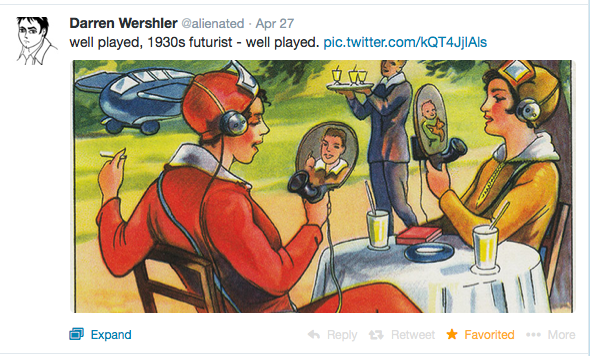It is time to re-read Vannevar Bush’s “As We May Think” and Douglas Engelbart’s “Augmenting Human Intellect.”
Bush (1945) wrote: There is a growing mountain of research. But there is increased evidence that we are being bogged down today as specialization extends. The investigator is staggered by the findings and conclusions of thousands of other workers—conclusions which he cannot find time to grasp, much less to remember, as they appear.
Engelbart (1962) wrote: By “augmenting human intellect” we mean increasing the capability of a man to approach a complex problem situation, to gain comprehension to suit his particular needs, and to derive solutions to problems. Increased capability in this respect is taken to mean a mixture of the following: more-rapid comprehension, better comprehension, the possibility of gaining a useful degree of comprehension in a situation that previously was too complex, speedier solutions, better solutions, and the possibility of finding solutions to problems that before seemed insoluble.
What advances are on the verge of reshaping how we may think and augmenting our intellect? How might these advances contribute to a Moore’s Law for service science and smart service systems? What are the related challenges and opportunities to this vision?
Smart phones are an everyday reality (not quite as envisioned in the 1930s, but close enough)…
Regarding how we may think and augmenting human intellect, my colleagues and I are working on a virtual community called the Cognitive Systems Institute (plan to launch next revision in September 2014) with one important goal being the creation of POVs to boost government and venture funding for cognitive systems research and startup development. “Cogs” (Cognitive Systems/Cognitive Assistants) for boosting regional economic development will be appearing at an accelerating pace. Gartner predicts 10% of all computers will be learning by 2017. Many industries and professions will be disrupted including higher education. The gist of the vision for the Cognitive Systems Institute is to have university researchers building “Cogs” for every profession, for every region and in every language, and with student teams launching startups using the Watson Developer Cloud. IBM’s BlueMix on SoftLayer is the beginning of the API Economy leading to Cognition as a Service, which access to much cognitive componentry including Natural Language Processing on OpenPower and Pattern Recognition on SyNAPSE. “Cogs” become our “Cognitive Bulldozers in the Era of Big Data/Internet of Things” because “Cogs” know individuals (you) and know professions (your job), boosting productivity and creativity (how to measure productivity and creativity for many professions is a challenge as well – I recommend this book). “Cogs” learn, use language to interact more naturally, and have levels of confidence in what they know and do not know – learning, language, and levels. The Forbes Global 2000 companies generate nearly a 1/3 of the GDP of the world in just 2000 publicly traded companies’ revenue…. they have combined about 100M employees. If there was a “Cog” to help each of their employees be twice as productive and creative – you move the needle on the GDP of the planet. People enjoy being more productive and creative so quality-of-life might also be improved, if done right. “Cogs” may well be a key part of a Moore’s Law for Smart Service Systems.
For those interested in helping, after re-reading Bush (1945) and Engelbart (1962), a practical next step would be to read this:
https://www.ibmdw.net/watson/docs/5-steps-powered-watson-application/
IBM has developed enabling technologies and proof-points, and is investing billions to realize this vision imagined by Bush and Engelbart. Aligning government funding and venture funding will enable university faculty researchers and student entrepreneurs to play a major role in making this vision a reality in the coming decade.
